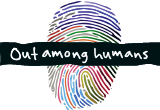Spanish Fever After ten years of Spanish, you‘d think a guy could order from the menu of the day with absolute confidence and even a little flair.
After ten years of Spanish, you‘d think a guy could order from the menu of the day with absolute confidence and even a little flair.
That’s an easy mistake to make given that Babbel (I haven’t tried it) promises to get you “speaking Spanish in just 3 weeks.”
But according to Malcolm Gladwell’s ten-thousand-hours theory on peak proficiency, yours truly is barely half way to fluency.
The idea of studying a new language materialized in the shower one random morning.
Twenty-five hours of classes a week in Barcelona, I speculated, would allow me to be with interesting people while spending months alone in a foreign city. The daily commute on the Metro would give me the sensation of working and living there.
Why Spanish? It’s widely spoken in the U.S. and shares its Latin roots with English. The sounds of its alphabet are familiar.
After ten years, I now read Spanish well enough, and I can make myself understood. But grasping things said to me is still hit and miss. It’s not easy to decipher a phone number, for example, before the next commercial comes on.
Like us, Spanish speakers are fond of swallowed syllables, shortcuts and non sequiturs. Textbooks lay things out as best they can but you grope to find your own individual path through the maze. Learning a third or fourth language, my friends in Barcelona say, gets much easier.
Nothing’s quite like finally breaking through a barrier and realizing you’ve reached the next level – it’s a crossword puzzle with no end of discoveries in sight. The irony is I now understand Spanish grammar better than the English I learned as a child.
Taking on a language is not for everybody of course. Both English and Spanish have a expression for us enthusiasts who get seduced by a pastime like this.
It’s the same word in both languages: a nerd, un/una nerd.![]()

Patrick Koeller
Estimado Señor Nerd—
Relative to Dutch, and after so many years living here in NL:
Ditto, ditto, and ditto…
Especially the part, “But grasping things said to me is still hit and miss. It’s not easy to decipher a phone number, for example, before the next commercial comes on.”
Making myself listen more carefully more consistently would sure help… but then life (other interests and old habits) gets in the way.
Anyway, cheers from here,
Patrick
Pat
Thanks for commenting, Patrick. I’m not complaining about the hobby that’s kept my interest for 10 years. But I’ve come to realize that language skills must be like math, athletic and musical skills – not distributed equally.
Scott Pemberton
Really enjoyed the story and insights, Pat. Congratulations on all the effort but, more important, all the accomplishment. Plus no small number of sunny afternoons in cafes. I think that for a really good feel for–not even grasp of–a language is extended total immersion. You’re trips to Barcelona are close, however. I guess you’ll just have to spend more time there.
Damaris Ohem
Estoy segura que ya hablas un muy buen español, aún cuando uno siempre siente que es insuficiente cuando se intenta ser fluido en un idioma que no es el materno.
Saludos Pat. Siempre guardo muy gratos recuerdos de los años que trabajé contigo
Pat
La verdad es, Damaris, que la idea de aprender español surgió cuando trabajamos juntos. Guillermo y tú fueron mi primer contacto con la gracia y el encanto de la cultura mexicana. He disfrutado cada minuto de estudio del español.
Pat Shiplett
La verdad es, Damaris, que la idea de aprender español surgió cuando trabajamos juntos. Guillermo y tú fueron mi primer contacto con la gracia y el encanto de la cultura mexicana. He disfrutado cada minuto de estudio del español.
Kevin Evanich
I share your pain.
Pat
Yeah, but it’s a good pain, Kevin.
Jim Thompson
1. Thank you for giving me the courage to continue resisting taking on Spanish seriously.
2. I liked the runaway story (previous post) very much. Writing out the complete sugar cookie recipe is a little bit of genius.
Pat
Face it, Jim, you don’t have what it takes to be a “nerd.”
Chris Haxager
Oh, how I love this post, Pat! Es muy cierto.
It’s been nine years for me………..Soy terrible. Sono terribile. I’m terrible in any language.
Pat
This language thing must be especially interesting to a professional writer like you.
But, Chris, I will never forgive you for abandoning Spanish for Italian.
Mary, a French teacher
Hello Patrick,
I’m not a Spanish speaker. I’m a French teacher, but I’ve been at a language plateau, which is where it sounds like you are. Here are some unsolicited suggestions to move into more fluency if Babbel is your primary language-learning tool:
1. Offer an hour of English conversation in exchange for an hour of Spanish conversation. (So no money is involved.) Post your offer in Spanish. If you want a particular kind of Spanish, specify that in your note. If you’d like to converse with someone with specific interests, add that. Suggest a public meeting place, like a Starbucks or another café. I suppose you could post on NextDoor. Or maybe post at Norris downstairs at NU or at the library. (One-on-one conversation is actually the best of all my suggestions. When you’re also teaching your Spanish-English conversation partner, a rapport as language-learners is established faster. You champion each other.)
2. Aren’t there also one-on-one and Zoom classes on Babbel?
3. Next time you travel to a Spanish-speaking country (or even in Evanston at a Spanish-speaking church service), consider going to church, even if you’re not especially religious. Think of it as a big language lab. In the Catholic Mass, the priest says something and the people either echo it back or give a particular response. Sometimes you say a whole text yourself: Can you say the Our Father in Spanish? It has a bunch of subjunctives in French, probably in Spanish too. Then there’s a target-language monologue to listen to: the sermon. There are moments where one greets the people standing nearby in Spanish to wish them peace. My advice would be to bring a “cheat sheet” with the whole service written out, so you can follow along and know what a person is supposed to say, then wean yourself off of it. Can you recognize the oral cue the priest gives and respond with the correct response? Too easy? Hah! Try it a few Sundays. I had quite a sense of satisfaction when I could keep up and could say the whole Mass along with everyone, and even understand the sermon.
3. Sing along with music in Spanish that you like. Ballads are story-telling, so they have more complete sentences, idioms, slang. Pull out the idioms, look up the vocabulary, being it into your conversational Spanish.
4. Numbers:
—Get a kid’s (inexpensive) arithmetic book and do the problems out loud in Spanish to get yourself more comfortable with numbers.
—Say the phone numbers of everyone you know (in Spanish phone-number grouping) aloud. Then rattle off these numbers. (Rattle, which is beyond “say.”)
—Read Spanish hotel ads and rattle off the phone numbers and prices.
—Get in the habit of thinking numbers you see around you in Spanish (not while you’re driving) maybe when you’re reading or out walking—numbers on license plates, train cars, addresses, etc.
5. Watch a Spanish movie every week or a Spanish TV series episode, preferably not dubbed from English into Spanish because the mouths of the actors are forming different words and won’t quite match with the dubbing. Mouth-reading is a skill too! Subtitles aren’t bad. Can you watch it once with subtitles and a second time without?
6. Are there any other Spanish learners whom you know? Would they be willing to read a scene of a modern play in Spanish with you? I’d suggest reading a short piece with the script, then can you say some of the lines without the script? Keep track of conversational phrases and idioms. Bring them into your conversational Spanish.
7. Perhaps you and your Spanish-English conversation partner could send each other short conversational emails, maybe using a new phrase, vocab word, idiom in its text?
8. Greet the wait staff in Spanish when you go to a restaurant. Ask questions about the food in Spanish if the restaurant isn’t too busy. Explain that you’re studying Spanish and like learning it. Leave a little extra in your tip.
9. Great that you can read in Spanish. Keep that up. Explore new authors. You’re getting vocabulary in context and are encountering idioms. Bring those into your conversation.
10. Spanish radio stations? Pod casts?
You might be doing some of these suggestions already. If so, great! If not yet, try some, especially the exchange of English and Spanish with a native speaker. That one is the most important.
Pat Shiplett
Mary, hi.
I can’t t ell you how much I appreciate your very helpful suggestions. The idea of a one-on-one bilingual exchange relationship is a great one. Helping in both directions makes so much sense.
I’ve never used Babbel but I’ve been part of a weekly Spanish discussion group for years and have recently found a wonderful listening exercise website.
Learning to read means coming to recognize what the words mean, in print – it’s a long process. Learning to comprehend conversation (where I lag) requires recognizing what the spoken syllables mean. I’ll put as much practice time on that as I did with reading,
Your students are lucky to have a teacher as generous as you.
Thanks, Pat